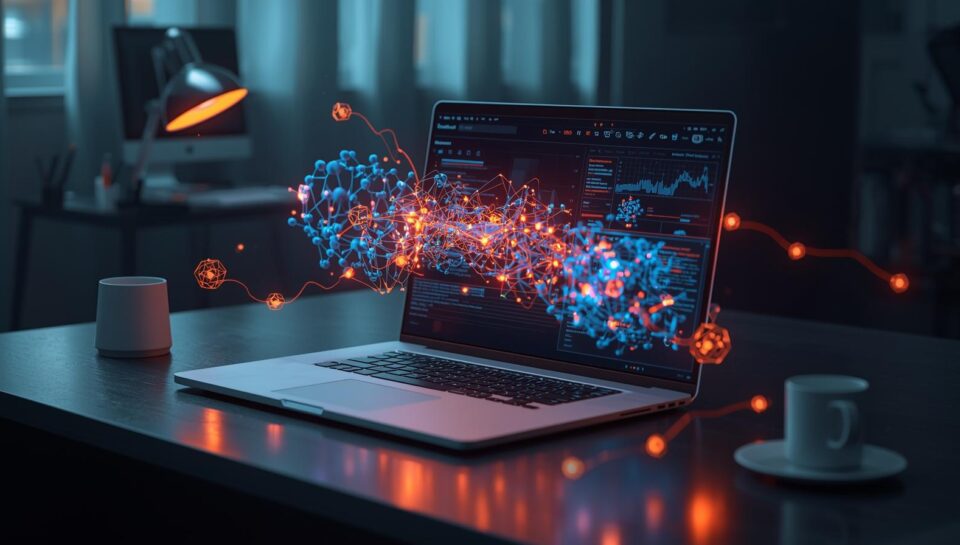
Article 3: Designing Multi-Agent Systems — Collaboration, Delegation, and Memory Sharing
In the last article, we saw how an AI agent runs on the Observe → Think → Act → Learn loop.
But one agent can only do so much.
Complex operations — like research, marketing, or DevOps — need multiple specialists.
So instead of one “super agent,” modern AI architectures are moving toward multi-agent systems:
autonomous AIs that talk, coordinate, and complete missions together.
🤖 From One Brain to a Network of Minds
Think of a multi-agent system as a digital team:
- One agent gathers data
- Another analyzes it
- A third writes the report
- A fourth reviews for quality
Each has its own role, goal, and prompt logic, yet all operate within a shared mission context.
This isn’t theoretical — frameworks like CrewAI, AutoGen, and LangChain Agents already enable this structure today.
⚙️ The Architecture of Multi-Agent Collaboration
A typical multi-agent system contains four layers:
| Layer | Function | Example |
|---|---|---|
| Mission Controller | Defines the overall objective | “Generate a weekly sales performance report.” |
| Specialized Agents | Perform domain-specific tasks | Data Agent, Analysis Agent, Report Agent |
| Communication Protocol | Defines how they exchange data | JSON, natural language, message bus |
| Memory & Feedback | Stores and shares results | Vector DB, local cache, or RAG pipeline |
You can visualize this like a human workflow system — except every node in the chain is an AI reasoning independently.
🧠 Agent Roles and Prompt Design
Each agent gets a distinct prompt blueprint.
Let’s take an example from a Market Analysis System:
📊 Data Agent
System: You are a Data Retrieval Agent.
Goal: Fetch relevant market statistics and summarize in JSON.
Constraints: Only pull from verified sources. Keep summaries under 100 words.
📈 Analyst Agent
System: You are a Market Analysis Agent.
Goal: Interpret the provided data, identify key patterns, and suggest trends.
Always explain reasoning.
🧾 Report Agent
System: You are a Report Writer Agent.
Goal: Create a clean executive summary for management.
Style: professional, concise, actionable.
Each role is modular.
By chaining them, you’ve built a digital pipeline that reasons and collaborates.
🔄 How Agents Communicate
Multi-agent coordination works best through structured message passing —
think of it as inter-agent conversation with clear protocol.
Example: JSON-based conversation format
{
"sender": "DataAgent",
"recipient": "AnalysisAgent",
"content": {
"data": [...],
"context": "Q4 performance metrics"
}
}
The analyst can then respond:
{
"sender": "AnalysisAgent",
"recipient": "ReportAgent",
"content": {
"insights": ["Sales up 12%", "Regional growth stable"],
"recommendation": "Invest in Product B marketing"
}
}
This transparency makes debugging and logging far easier than using pure text chains.
🧩 Practical Build Example — Multi-Agent Report Generator
Let’s build your first working prototype.
Goal:
Create a system that analyzes sales data and generates an executive report automatically.
Agents:
- Data Agent — Reads CSV and summarizes key metrics.
- Analysis Agent — Detects trends and anomalies.
- Report Agent — Produces a formatted summary for management.
Tech Stack:
- Python + LangChain
- OpenAI or Anthropic LLM
- SQLite / Pinecone for memory
- JSON as the message format
Simple coordination flow (pseudo-code):
data = data_agent.run("sales_data.csv")
insights = analysis_agent.run(data)
final_report = report_agent.run(insights)
print(final_report)
Advanced: Add a “Manager Agent” on top that monitors output quality and requests revisions.
This turns your system into a fully recursive AI team.
🧠 Memory and Knowledge Sharing
Without shared memory, your agents act like disconnected silos.
To build continuity:
| Memory Type | Implementation | Example |
|---|---|---|
| Shared Vector DB | Pinecone / Chroma | Store all findings for reuse |
| Local Context Memory | JSON cache | Share last results between runs |
| Reflexive Feedback | Prompt reflection | “How can I improve my last task?” |
Sample Reflection Prompt:
Reflect on the quality of the last analysis.
What could improve accuracy or clarity?
List 3 adjustments for next run.
This lets agents self-correct without retraining.
⚙️ Delegation and Coordination Patterns
Multi-agent design introduces task delegation patterns.
Here are the top three you’ll actually use:
| Pattern | Description | Use Case |
|---|---|---|
| Chain Pattern | One agent passes output to next | Report generation, pipelines |
| Manager Pattern | Supervisor assigns and validates work | Task orchestration |
| Collaborative Pattern | Agents discuss and refine answers | Brainstorming, ideation systems |
Pro Tip:
CrewAI’s “Task-Orchestrator” model supports all three, making it ideal for enterprise setups.
📚 Further Reading & Frameworks
If you’re serious about implementing multi-agent collaboration:
- Microsoft’s AutoGen Framework (2024) — multi-agent conversation design
- CrewAI Docs: agent orchestration with memory and control layers
- LangChain Agents + Memory — structured pipelines and retrievers
- O’Reilly: Prompt Engineering for LLMs (Ch. 9) — “Building Coordinated Systems”
- Google AI Prompt Engineering Whitepaper (2023) — design principles for collaborative reasoning
Each one deepens your understanding of agent coordination and reliability at scale.
🔍 Key Takeaway
Multi-agent systems represent the next frontier of AI automation —
not just performing tasks, but managing, reasoning, and improving collectively.
By designing role-based prompts, communication channels, and shared memory,
you’re no longer building a tool — you’re designing a digital organization.
🔜 Next Article → “AI Ecosystem Design — Building a Unified Intelligence Layer Across Your Organization”
In the next article, we’ll connect all these systems — agents, data pipelines, tools, and human inputs — into a unified intelligence layer.
You’ll learn how to architect an AI brain for your organization — one that adapts, remembers, and reasons across every department.













